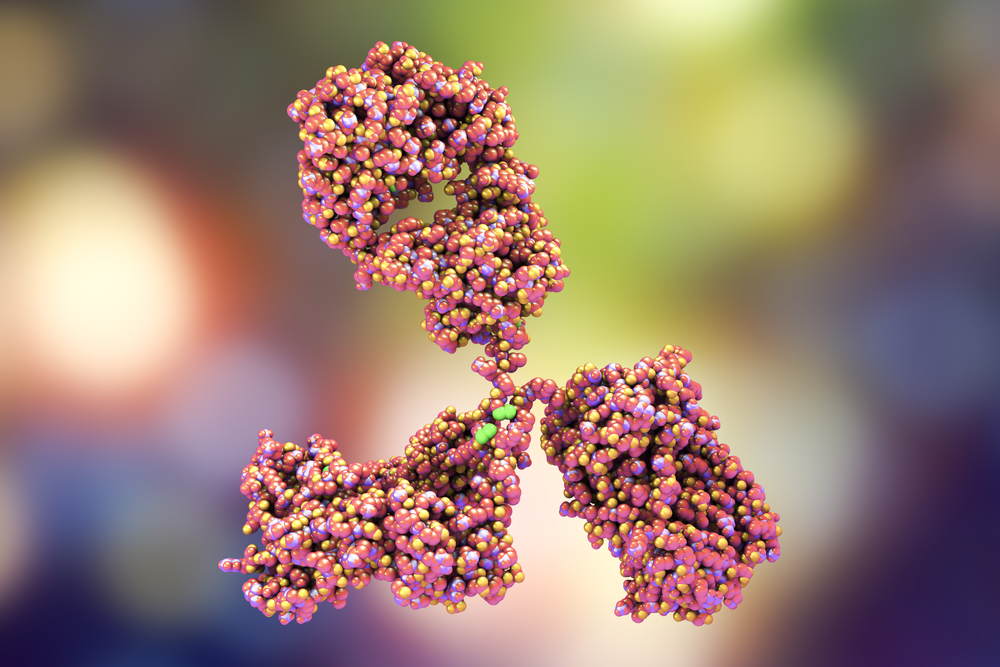MOUSE ANTI-MYCOPLASMA PNEUMONIAE P1 (6534)
Mycoplasma pneumoniae P1 antibody (clone 6534), is a mouse monoclonal antibody that recognises cytadhesin P1 protein from Mycoplasma pneumoniae (M. pneumoniae). This antibody is suitable for use as a capture antibody with MAB12285 (clone 6537) in ELISA applications.
PRODUCT DETAILS – MOUSE ANTI-MYCOPLASMA PNEUMONIAE P1 (6534)
- Mouse anti-Mycoplasma pneumoniae P1 monoclonal IgG2b antibody (clone 6534).
- Greater than 95% purity by SDS-PAGE and buffered in PBS, pH7.2.
BACKGROUND
Mycoplasma pneumoniae (M. pneumoniae) is small atypical bacterium of the Mollicute class, and a member of the family Mycoplasmataceae. M. pneumoniae was first isolated by Eaton et al in 1944 and is now recognised as a major cause of respiratory tract infection in humans. In order to infect host cells Mycoplasma pneumoniae adheres to ciliated epithelium in the respiratory tract, which requires the interaction of several proteins including P1, P30, P116. P1 protein is a major integral surface molecule located at the tip of Mycoplasma pneumoniae. It is an immunogen and one of the major adhesins that plays a key role in cytoadherence, motility and virulence (Chourasia BK).
Mycoplasma pneumoniae is geographically widespread, causing respiratory disease in children and adults, and is one of the causative agents of community acquired pneumonia. Transmission of Mycoplasma pneumoniae from human to human is predominantly through close contact with airborne respiratory droplets from an infected individual. Mycoplasma pneumoniae is sensitive to desiccation and therefore close proximity to an infected individual is necessary for successful transmission (CDC).
Mycoplasma pneumoniae is an extracellular pathogen which lacks a cell wall and has the capability of reproducing by itself. It infects respiratory epithelium in the upper and lower respiratory tract resulting in the gradual development of disease symptoms, which typically occurs over a period of 1- 4 weeks. The clinical symptoms associated with Mycoplasma pneumoniae infection are diverse, but the disease is characterised by the onset of fever, headache, general malaise, pharyngitis, tracheobronchitis and a persistent cough that increases in severity. In some cases, infection can result in severe respiratory disease and clinical complications affecting extrapulmonary sites can also occur (Waites KB).
Mycoplasma pneumoniae infection is self-limiting in most cases but may persist for several months, even after treatment. Diagnosis of Mycoplasma pneumoniae infection is currently performed using serological or molecular detection methods. However, current methods of detection are time consuming, and lack the sensitivity, and improved assays are needed for rapid point-of-care diagnosis of the disease (CDC).
REFERENCES
- Chourasia BK, Chaudhry R, Malhotra P. (2014). Delineation of immunodominant and cytadherence segment(s) of Mycoplasma pneumoniae P1 gene. BMC Microbiol. Apr 28;14:108
- Center of Disease Control and Prevention: Mycoplasma pneumoniae infection, Disease specifics.
- Waites, KB and Talkington, DF (2004). Mycoplasma pneumoniae and Its Role as a Human Pathogen.Clin Microbiol Rev. 17(4): 697–728.
- Center of Disease Control and Prevention: Mycoplasma pneumoniae infection, diagnostic methods.

